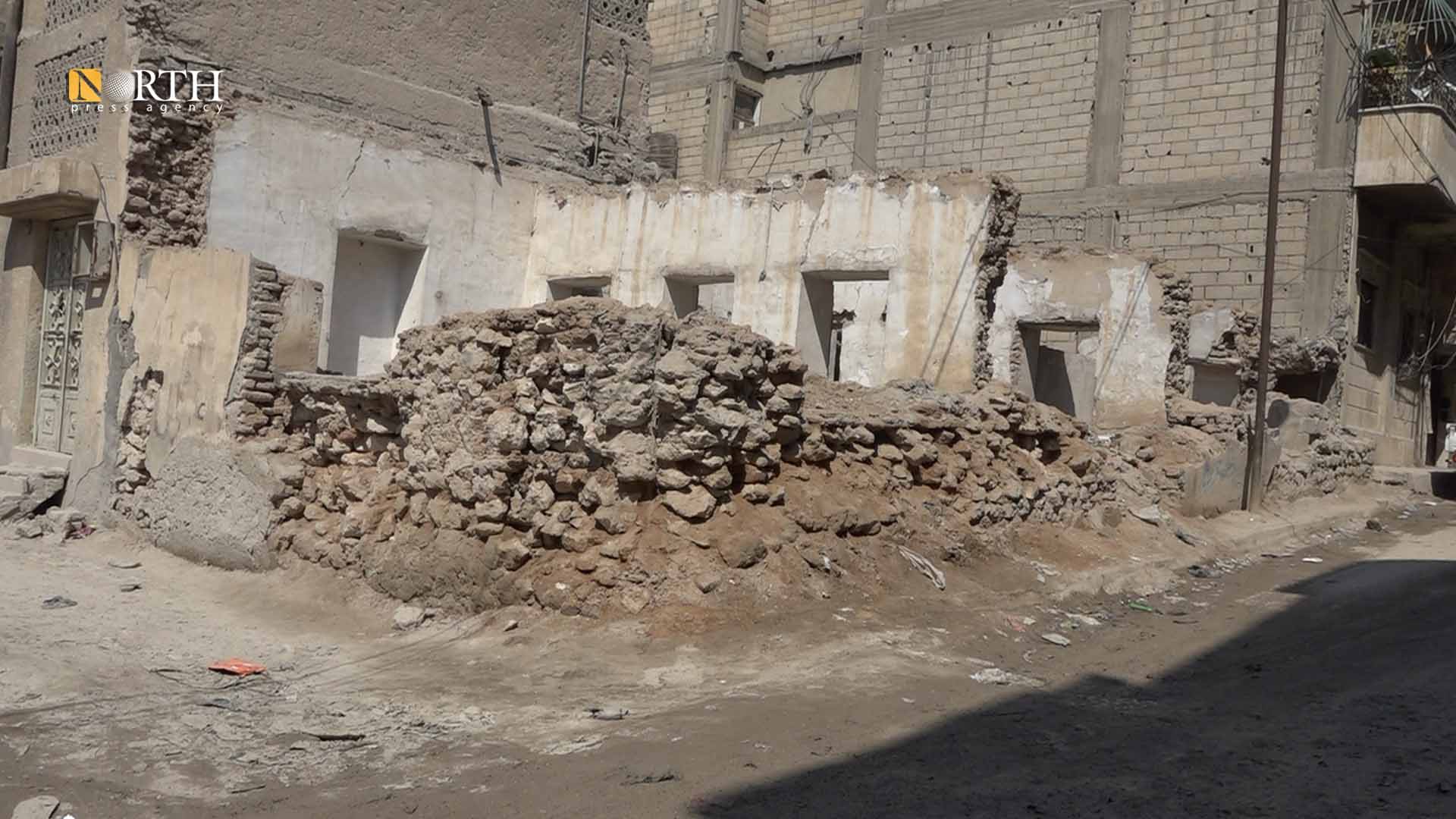RAQQA, Syria (North Press) – Ahmad al-Shalhoum, 40, is proud of the memories engraved on the wall of his destroyed mud-brick house in the city of Raqqa, northern Syria. He refused the idea to allow a contractor bulldoze it and construct a building instead.
Al-Shalhoum told North Press he was unable to renovate his 100-old-year house. The walls have cracks and some parts are even demolished. Some other houses in Raqqa’s old part also suffer the same problem.
Al-Shalhoum’s house is surrounded by several buildings, “some owners bulldozed their old houses to rebuild new ones. Some other houses remained unimproved due to the worsening economic condition,” he said.
Mud-brick houses vanished from Raqqa gradually. Some of them were built in the end of the 19th century and the beginning of the 20th century.
A documented survey on the number of mud-brick houses in Raqqa is not available. However, the majority of the houses are in the main parts of the city.
Since the beginning of March, Muhammad al-Hamoud, 50, has been renovating his mud-brick house in al-Ajili neighborhood after a local organization undertook the work.
A local organization is renovating some guest houses as they were considered a place to convene meetings and resolve tribal disputes.
Al-Hamoud’s grandfather built the house 100 years ago. Now it is cracked because of natural factors. Renovation of the house means to maintain the legacy of the state that has lost much during the ten years of conflict.
During the last three years, the Culture and Heritage Committee of the Raqqa Civil Council, affiliated with the Autonomous Administration of North and East Syria (AANES), renovated parts of the historical city walls of Raqqa and the Baghdad Gate, which date back to the Abbasid era. The site of the German mission in Tel Bi’a or the historical city of Tuttul on the northeastern outskirts of the city was also renovated, according to press releases.
Al-Hamoud calls on the owners not to demolish the mud-brick houses, rather to seek for alternative solutions and ways for renovation. “The house is like a palace for whom he evaluates it.” Therefore, al-Hamoud rejected all the offers to sell it with a view to maintain it won’t be bulldozed.
The residents think mud-brick houses are more convenient than the buildings, which are cheaper to build than buildings and they are warm in winter and cool in summer.
Nosaiba Mustafa, head of the Raqqa-based Culture and Heritage Committee said the Torath for Humanity organization is currently coordinating with the Heritage and Culture Committee of the Raqqa Civil Council.
“The objective is to renovate the guest houses which are considered the city’s archaeological site, but renovating the demolished houses are not in the agenda now,” she said.
There are 12,781 demolished houses in Raqqa, out of which 3,326 are totally leveled while 3,962 further houses are greatly destroyed and 5,493 houses are partially destroyed after ISIS was expelled from the city, the United Nations Institute for Training and Research (UNITAR) said in 2019.
The houses affected to a great extent over the past years. “rebuilding the houses are not included in the Heritage and Culture priorities given there are historical sites need to be renovated,” Nosaiba said.

